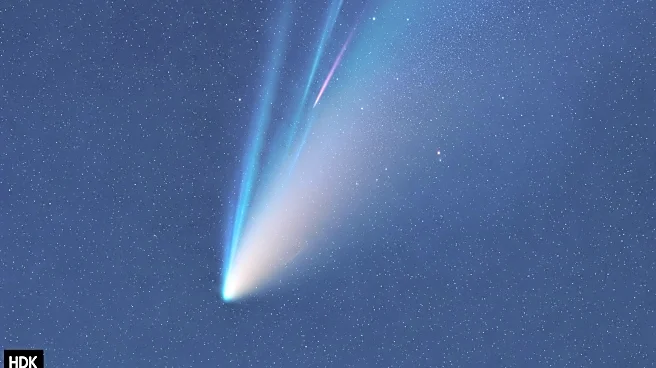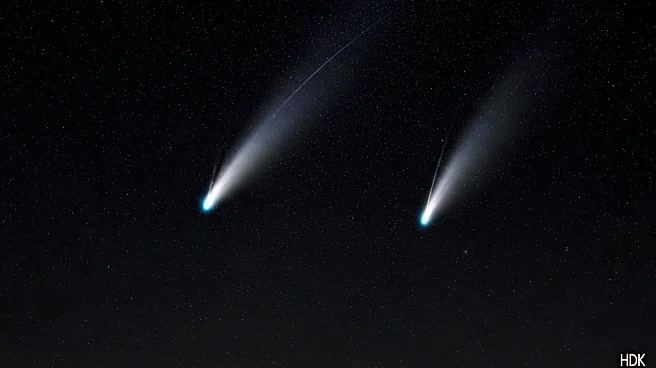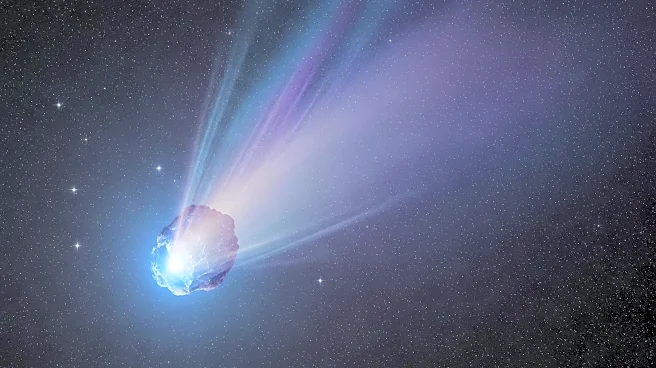What's Happening?
Comet Lemmon, a newly discovered emerald-green comet, is set to make a close approach to Earth, offering a rare opportunity for skywatchers to observe it with the naked eye. Known as Comet C/2025 A6, Lemmon was first spotted by astronomers at the Mt. Lemmon SkyCenter in Arizona. The comet will come within 56 million miles of Earth on October 21, 2025, and will reach its closest point to the Sun on November 8. The comet's green glow is attributed to diatomic carbon, and it features a vibrant tail composed of gas, ice, and dust.
Why It's Important?
The appearance of Comet Lemmon provides a unique opportunity for both amateur and professional astronomers to study a celestial object from the distant Oort Cloud. Its visibility to the naked eye makes it accessible to a wide audience, potentially sparking public interest in astronomy and space science. The comet's close approach also allows scientists to study its composition and behavior, contributing to our understanding of cometary dynamics and the solar system's history. Observations of Comet Lemmon could provide insights into the processes that govern cometary orbits and interactions with solar radiation.
What's Next?
Skywatchers are advised to look for Comet Lemmon in the constellation Lynx, particularly in mid-October when it is expected to be brightest. The comet's visibility will be optimal before dawn or shortly after dusk. Astronomers will continue to monitor the comet's trajectory and behavior as it approaches the Sun, with the potential for new discoveries about its composition and orbit. The comet's journey through the solar system may also alter its orbit, providing further opportunities for study.










